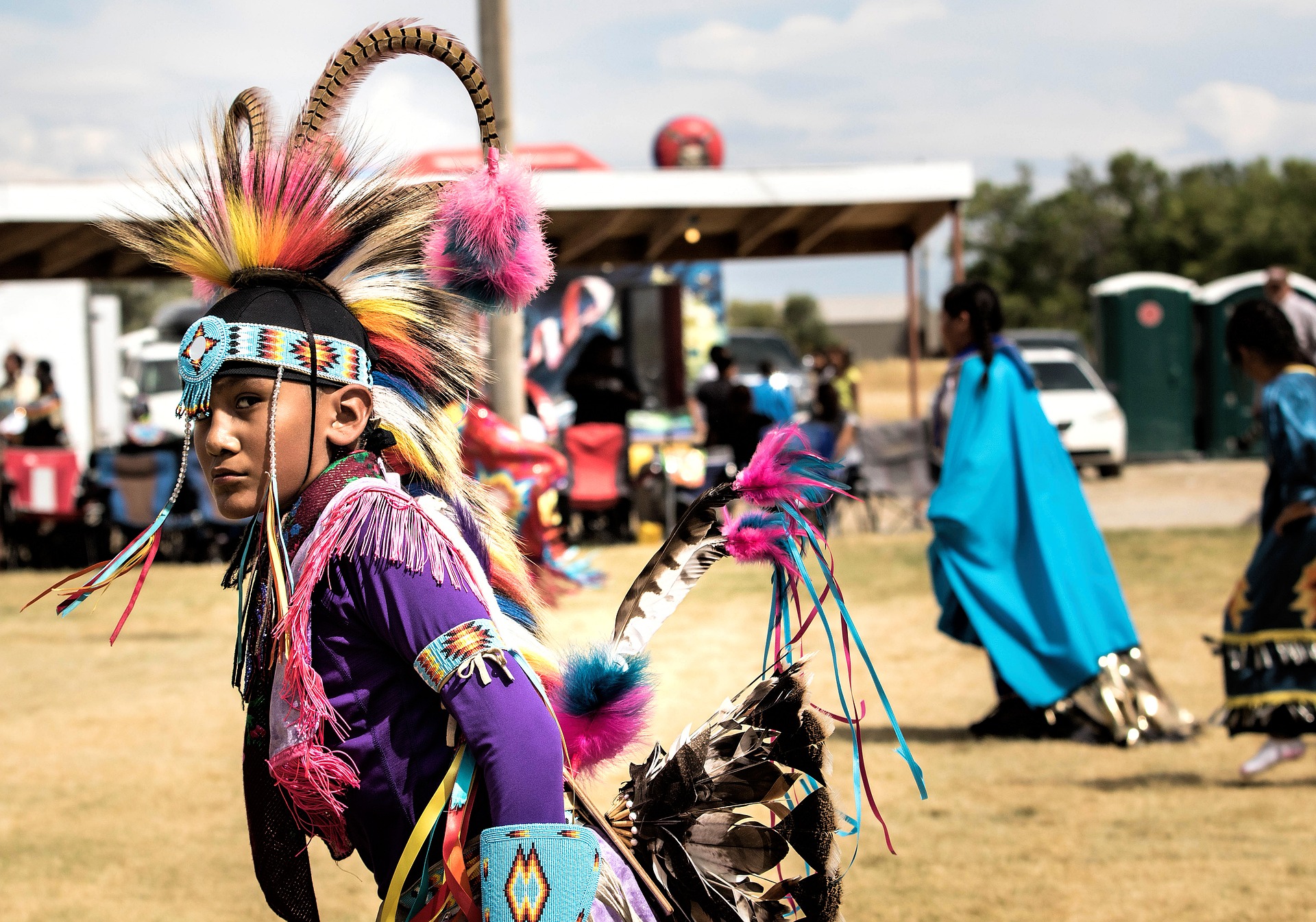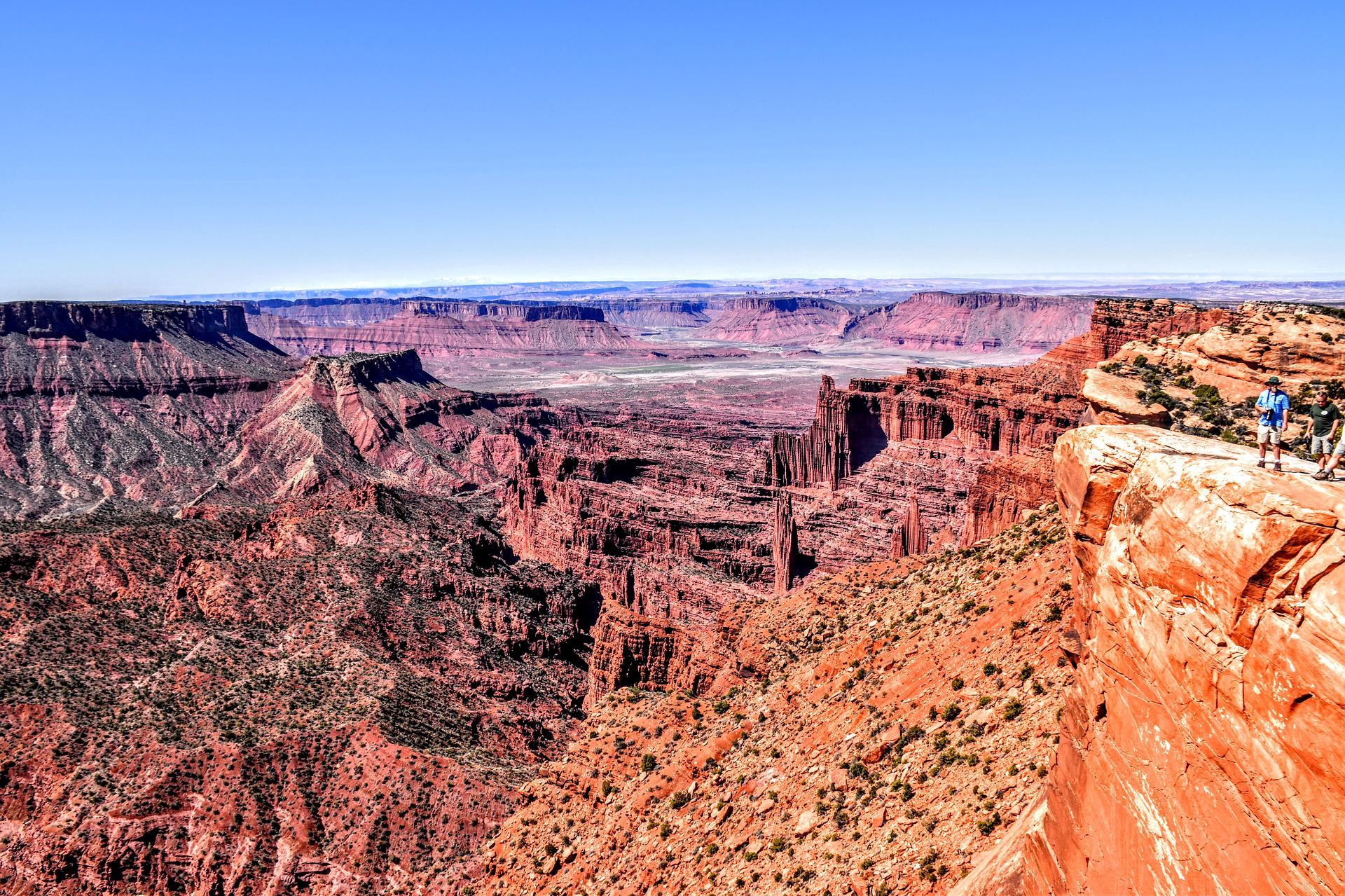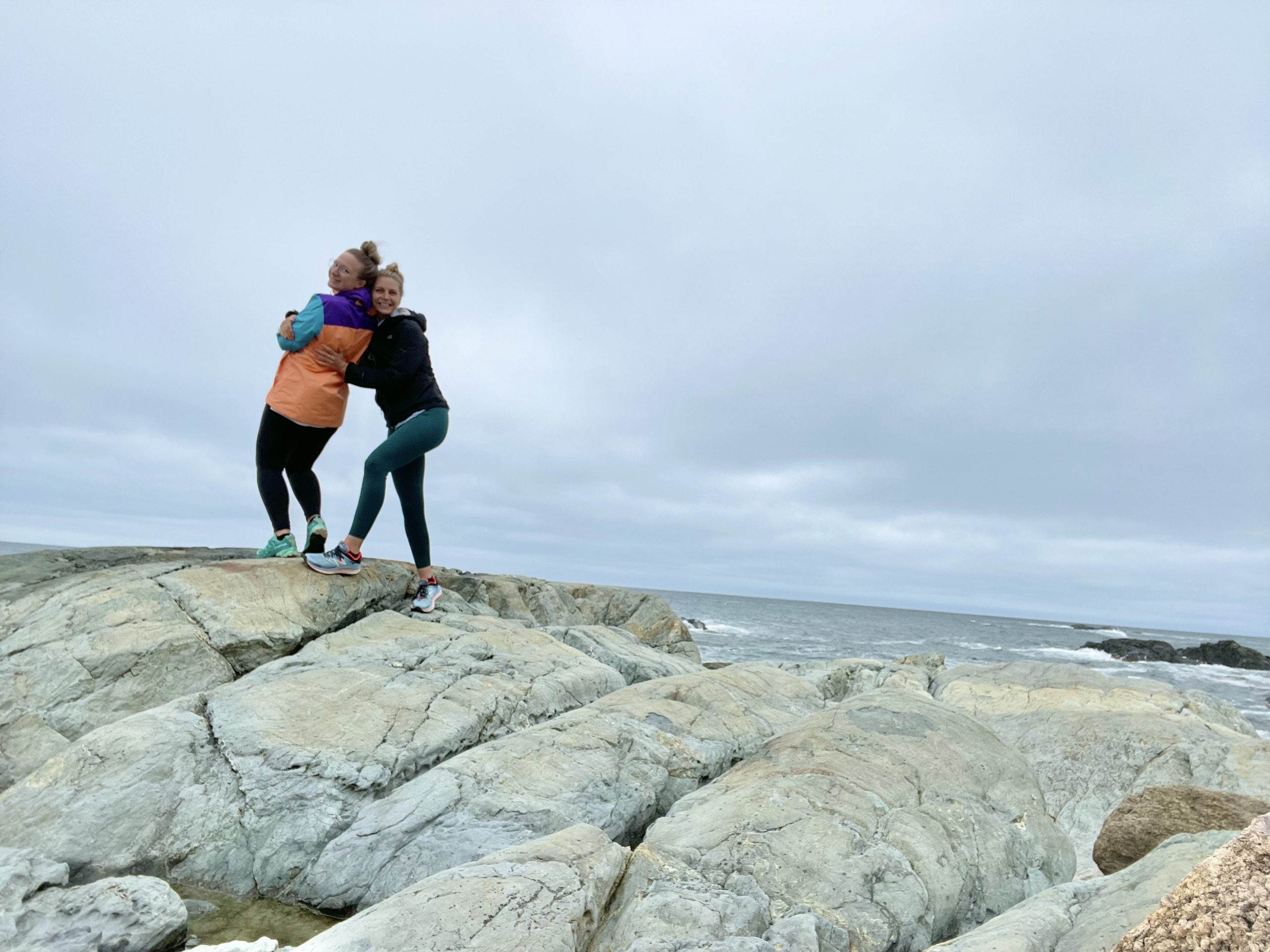
How to Support Indigenous People While Traveling
The Fourth of July has just passed—America’s Independence Day. And while I love a good BBQ Summer holiday, this particular one brings conflicting emotion. There is the fact that while white Americans were celebrating independence from Britain, black Americans were being sold as property. Yikes. Then there is also the question of celebrating the birth of a nation on stolen lands. Reconciling the desire to wave our flags, sing the anthem, and crack a cold one, with the knowing that all these happy times were brought about by theft. Genocide.
It is difficult to be a thinking American sometimes.
While we cannot solve all the problems of the past, there are ways—obligations, I’d say—to try to do better for the future. Juneteenth—June 19th, a new Federal holiday as of this year, celebrates the day when every American citizen was finally free of enslavement. True Independence Day. We should all—black, white, or otherwise—be celebrating this holiday henceforth, as a day when the U.S. got inches closer to living up to its own ideals.
And what of our Native brothers and sisters?
As a country, we are finally gaining greater awareness of the atrocities committed in the “discovery” and founding of our nation. We are beginning to collectively see the whole thing for what it was: Morally reprehensible, and yet…the history of us. And while sharing memes about the plight of Native Americans and the irony of our immigration battles can give a momentary boost of endorphins and wokeness, there is more to be done. But what?
This was the question I set out to answer, and I wanted to know specifically in the realm of travel. How can I support Indigenous people in my travels? How can I ensure that I am being as respectful as possible in this now shared land?
The following tips are easy ways to support Indigenous People while traveling. They are specifically geared toward U.S. travel and supporting Native Americans but can also be used in other countries. The U.S. is not unique in its treatment of Native Peoples or its history of colonization, so feel free to adapt these tips for travel in Australia, Canada, Colombia or any of the 70 other countries still inhabited by Indigenous Peoples. Without further ado, here they are:
8 Easy Ways to Support Indigenous People while Traveling
1. Use the Native Land App
Use this app on your smartphone to find out which Native Lands you are traipsing over. Simply input a city name to see the native tribes inhabiting the place, languages spoken, and even treaties in effect.
Where I live, for example, in Cranston, Rhode Island, is Pokanoket, Narragansett, and Wompanoag land. On my layover in Portland, OR this week, I found that the metro area was divided amongst Cowlitz, Clackamas, and Confederated Tribes of Grand Ronde.
This is about as simple as it gets, just open the app and voila—answers! But increasing visibility of Native Peoples is a huge step in the right direction. Just making yourself aware of the tribal lands you’re visiting can cause a shift in perspective. You can click links for further research on treaties governing the area, a great activity when your beach day is rained out or you’re taking a coffee-shop break from walking the city. The Native Land map is worldwide, so you can use this resource wherever your travels take you.
Check out the website (Native-land.ca) or click here to download the mobile app. You can also search “Native Land” in the app store.
2. Learn about issues impacting local tribes
Now that you know which local tribes are represented in the area, you can find out about issues affecting them. Knowing that one of the tribes here in Rhode Island is Wompanoag, I was able to find a tribe website in a matter of seconds with the help of Google. There I found tribal news, info about an upcoming election, even employment opportunities.
Read and reflect. Maybe you want to sign a petition to help further a cause. Maybe you would like to share information on social media. Maybe you want to call or email U.S. representatives that could have an impact on the issue at hand. All of these actions would be helpful, and you can feel more like a respectful ally to Indigenous people and less like a colonizer.
Maybe donating money is more up your alley, and that is fine too! Donating directly to address needs of local Native Peoples in the area you’ll be visiting, or in the area in which you live, is a great way to have direct impact and feel you’re doing your part in a boots-on-the-ground kind of way. But if you are having trouble figuring out exactly to whom or where to donate, then focus on larger organizations that support issues important to Native People. Here are some ideas:

A visit to any National Park in the U.S. or Canada is a great backdrop for getting to know local tribes and learning about Native American culture.
3. Visit a Reservation
Not every Native American reservation is open to guests. But a quick internet search will let you know if there is opportunity for a stay or visit. Some Indian Reservations, like Navajo Nation, have lodging available for guests. Others have cultural centers and opportunities for exploration. Cherokee Nation, for example, has a pass for $15 which allows entry into the Cherokee Heritage Center, Cherokee National Prison Museum, the Cherokee Supreme Court Museum, and the John Ross Museum. Once you have found out which tribal lands you’ll be visiting, you can search to see if any educational programming, museums, or cultural ceremonies are open to tourists. A quick trip to a visitor’s center is a tiny blip on your travel radar, but you’ll learn a lot and will be supporting Indigenous people.
Check out this article from Paste Magazine:
4. Buy Authentic Souvenirs
A super easy way to support Indigenous people while traveling. When you see something you like in your travels, dig a little deeper to see if it is actually produced by Indigenous people or if it is “inspired” by them and then mass-produced. Pay a fair price for Native art and support Indigenous people instead of buying the half price version and supporting theft of culture. Buy souvenirs inside a Reservation, in the U.S., or at Native American art festivals and markets. Research ways to do this abroad as well.
Read more about buying authentic in this Huffington Post article:
Indigenous Artists: It’s OK to Wear/Buy Indigenous Art. Just Make Sure it’s Authentic.—Huffpost.com
In Native America there is laughter, pain, joy, beauty, love, loss and triumphs and tragedies. We are alive! And we will welcome you to travel with us to lands of outstanding beauty, to appreciate ancient cultures, and to interact with Peoples of astounding spirit.
-Go Native America website
5. Be Respectful of the Places You Visit
This is a basic tenet that should go without saying, but perhaps putting it in this context will drive it home a bit more forcefully. When you litter, tag structures, carve your name in trees, trample vegetation, or leave things in worse condition than you found them, you are not only breaking the codes of the great outdoors and shared space, but you are also disrespecting what are sacred places in other cultures. Think of someone waltzing into your church or temple and spray-painting expletives or tossing their trash at the altar. Not cool. Has never been cool. But now that you know it is like this, you’ll be even more diligent to be a respectful visitor to outdoor spaces.
Don’t invite yourself to rituals, ceremonies or places. Instead, wait to be invited, or research places you are welcome. Do not take photos of human beings without their permission. (This goes for everywhere.)
6. Book your tours with native guides and tour companies
Not only are you supporting Indigenous people while traveling, but as a bonus, most of these companies will be eco-friendly and promote sustainable travel. Double points for doing better!
Whether you’re interested in kayaking a river, hiking a mountain, or doing a city walking tour, you will likely be able to find a Native guide to show you the way. It might take five extra minutes of research but will be totally worth it.
Check out this list of Native American tours & guides by AINTA (American Indian Alaska Native Tourism Association) to get some ideas:
Native American Tours—ainta.org
Or this one from Outside online:
8 Guides and Tours to Honor Indigenous Cultures—outsideonline.com

Support Native artist-- buy authentic.
7. Make this the trip
This is a great way to support Indigenous people while traveling and have an unforgettable vacation. There is so much to learn from Indigenous Peoples in the U.S. and around the world. Rich cultural history to take in, new perspectives to be gained, and a greater understanding of the places we think we know. Why not make your next vacation an educational, immersive experience and plan travel around Indigenous culture? There is NO shortage of things to see and do.
Navajo Nation, for example, stretches across Arizona, New Mexico, and Utah. Just TRY seeing everything in a week! Plan a weekend at the Annual Iriquois Indian Festival, complete with art market, dances, and storytelling.
Check out Go Native America to find 1-day, 3-day, and 7-day itineraries, all in Native country and all by Native guides.
Destination Indigenous, created by the Indigenous Tour Association of Canada (ITAC) provides several itineraries throughout Canada for Native vacations.
NativeAmerica.travel also provides travel itineraries, searchable by region and length of trip.
Or, if you want more of a festival experience, attend a Powwow. Check out this list from Travel Awaits and mark your calendars!
8. Read More
I am not an expert. Far, far from it. I am just trying to get a little educated and expand my horizons like all of you. I recommend reading other resources, especially content created by Indigenous people. You can start with these:
How to Honor the Native American Population while Traveling America—How Not To Travel Like a Basic Bitch (hownottotravellikeabasicbitch.com)
How to Travel Responsibly—Indigenous Tourism BC
Traveling on Stolen Land: How to Acknowledge and Respect Its Indigenous Identity—Tripsavvy
And that’s all I’ve got. 8 easy tips for how to support Indigenous people while traveling. It is amazing how much a little, tiny bit of education can shift your perspective. If you ask me, there is no better educator than travel, and once you start learning, the itch will be there to learn more.
Here’s hoping for more visibility and respect of Native peoples, lands, and cultures. Here’s hoping for new, interesting travel ideas and a widening of perspective. Have a happy, healthy weekend, and let us know when you start planning your next immersive trip!
Until next time.


Hey, thanks for stopping by!
I’m Toni, and I run the show here at A Wheel in the Sky. I hope you liked this piece on how to support Indigenous People while traveling. If you’re interested in more travel tips and travel-related content, check out some of these posts:
6 Best Travel Tips I’ve Learned Along the Way
Traveling with Dietary Restrictions
Traveling While Woke: A Story of Privilege
7 Easy Travel Tips to Help You Go Greener
Or Check out some of my Travel Guide posts.
Image Credit in order of appearance:
Feature Image Native American Arapaho by User 4064462 via Pixabay
Desert by cfranco101 via Pixabay
Arapaho Powwow by User 4064462 via Pixabay



Meagaan
Love this💖